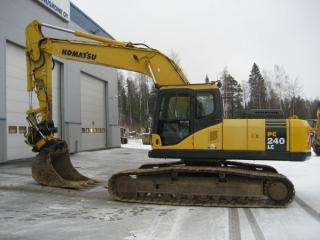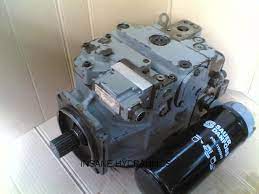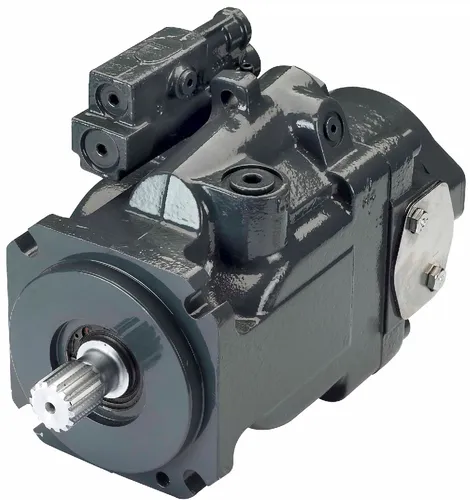pc240 lc 10 excavator komatsu how to check hydraulic fluid correctly
purchasing PC240 LC-10 excavator komatsu parts is the necessary measure to be taken for business repairing and upgrading requirement for our equipment.
pc240 lc 10 excavator komatsu-Check the hydraulic oil level.
The hydraulic oil level should be checked every eight hours of operation, or at the end of each day. To check the level, it is best to park the machine on a flat surface and set the parking brake.
Check that the engine is not running before you remove the filler cap. The engine should be off and cool before attempting to check the oil level.
Remove the filler cap by turning it counterclockwise. Use a clean cloth to wipe around any dirt and debris on top of the filler neck, then replace the filler cap by turning it clockwise until it is tight.
The hydraulic oil level can now be seen in the sight glass located on top of the hydraulic fluid tank. The sight glass is marked with two lines: “Full” and “Add”. If there is no line marked “Full”, make sure that you are looking through a clean sight glass to see if there is oil in it.
The level should be between these two marks when the machine has been parked for at least 12 hours. If the level is low, add approved hydraulic fluid to bring it up to the correct level.

pc240 lc 10 excavator komatsu-When checking the hydraulic oil level, do so when the engine has been stopped for more than 5 minutes.
The Komatsu PC240LCi-10 incorporates innovative INTELI-LIGENT MACHINE CONTROL (IMC) technology. The PC240LCi-10 has integrated KOMTRAX, the industry’s most advanced telematics system, with IMC to provide real-time machine operating data. In addition, the engine includes a new diesel oxidation catalyst (DOC), which reduces emissions without the need for diesel particulate filter (DPF). The hydraulic system of the PC240LCi-10 is completely redesigned and delivers better fuel efficiency and boasts a larger bucket capacity. This machine is Tier 4 Final emissions certified.
When checking the hydraulic oil level, do so when the engine has been stopped for more than 5 minutes. This will allow any oil which has been carried back from the hydraulic circuit to drain back into the tank. Oil temperature should be between 15°C and 35°C (60°F and 95°F) for accurate reading of dipstick.
Check that there is no damage to the air cleaner restriction gauge or indicator rod – repair if there is any damage.
pc240 lc 10 excavator komatsu-If the hydraulic temperature is 5°C (41°F) or lower, place a heater in the engine room, and start the engine until the heater has warmed up.
When adding or changing hydraulic fluid, the following procedure should be used:
If the hydraulic temperature is 5°C (41°F) or lower, place a heater in the engine room, and start the engine until the heater has warmed up.
When replacing hydraulic oil or filter elements, check for leakage from pipes and hoses. Also, check for damage to pipes and hoses.
When adding hydraulic oil, do not let dust or foreign material into the tank.
If the radiator is dirty, clean it with water. If it is severely dirty, warm up the engine before cleaning. When washing with water, be sure to drain all of the water immediately after washing.
pc240 lc 10 excavator komatsu-Park the machine on firm, level ground, engage parking brake, stop the engine and remove key.
How to check hydraulic fluid correctly
Park the machine on firm, level ground, engage parking brake, stop the engine and remove key.
Level Gauge: Check fluid level with the machine parked on a level surface.
Check that fuel tank is full. Lift operating lever and lower attachment to ground. Move bucket in and out several times to allow hydraulic oil to return to reservoir.
With engine stopped and parking brake engaged, lift operating lever (C) and lower attachment to ground. Move bucket in and out several times to allow hydraulic oil to return to reservoir (A).
Check fluid level through FILLER CAP (B). Add oil if necessary through filler cap with engine running. Do not overfill.
pc240 lc 10 excavator komatsu-Open access cover on right side of excavator and locate oil dipstick P/N 500-705-6910.
Open access cover on right side of excavator and locate oil dipstick P/N 500-705-6910.
Remove the dipstick and wipe the oil clean using a clean cloth. Reinsert the dipstick fully into the filler neck and remove again.
The fluid level should be between the upper and lower marks indicated on the dipstick.
Check for any signs of contamination such as water, dirt or metal particles. If any are observed, contact your authorized Komatsu distributor for further instructions.
Add hydraulic oil if necessary to raise the level to between the upper and lower marks indicated on the dipstick. Use SAE 10W-30 engine oil that meets API GL-4 specifications. The use of any other type of oil may damage the system.
pc240 lc 10 excavator komatsu-Clean dipstick with clean cloth and reinsert fully into filler tube and remove again to check oil level; if necessary add additional oil to bring level to full mark as indicated on dipstick.
After checking the hydraulic fluid on your excavator, you may notice some of these common mistakes:
Not properly cleaning the dipstick. This can lead to an inaccurate reading of the hydraulic fluid level.
Not using the correct type of hydraulic fluid. Using a different brand or synthetic-based hydraulic fluid can cause damage to your equipment’s internal components. Always use Komatsu Genuine Hydraulic Oil for your Komatsu excavator or work tool.
Using a lower weight grade than recommended. A lower weight grade can change the viscosity of the hydraulic fluid and cause damage to your equipment’s internal components over time.
Not changing the hydraulic fluid at the recommended intervals. Like any other lubricant, hydraulic fluid breaks down over time and will lose its ability to properly lubricate your equipment’s internal components and provide proper cooling protection.
pc240 lc 10 excavator komatsu-PC240 LC 10 hydraulic fluid should be checked twice.
The Komatsu PC240 LC 10 hydraulic fluid should be checked twice. The first time to check is before the work begins and the second is at the end of the workday. Before starting the machine, open the engine compartment and check both reservoirs. Each reservoir has a dipstick. Make sure that each dipstick is at the full mark. If it is not, add hydraulic fluid until it reaches the full mark. If you are using a machine that is particularly dirty from previous use, you may want to change out all of your hydraulic oil prior to starting work for the day.
Once you have started the machine and completed your daily pre-start checks, you will need to start up your engine and allow it to run for about five minutes or so in order to warm up your oil. Once this is done, shut off your engine and open up your engine compartment again. Check both reservoirs once again for fluid levels. Add fluid as needed if not at full capacity, then add oil until it reaches the full level indicated by a yellow line on either side of each reservoir. Your oil should be changed once every 500 hours of operation or once per year if you do not operate your equipment very often.



